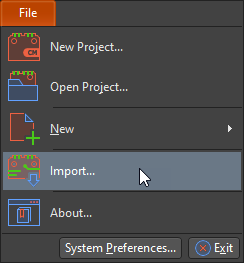How to Design a 4-20mA Current Loop Receiver with Minimal Components
I’ve always been a fan of Gordon Ramsay. He never fails to amaze me with his colorful cursing as raw scallops are continuously served by hapless Hell’s Kitchen contestants. But what really amused me was when he tried his hand at Asian cuisine. The tables were turned, and he learned the hard way that good Asian cuisine is a completely different beast than his usual beef wellingtons.
Process Control: Where 4-20mA reign supreme.
I had a similar experience when I shifted to analog design in an industry dominated by programmable logic controllers (PLCs), after spending 5 years designing pure digital electronics. I got my first taste of “Ramsay’s foray into Asian delicacies” as I worked on my first project involving multiple 4-20mA current loop receivers with an 8-bit microcontroller as a low-cost localized option for PLCs. For an analog process control expert this would be a walk in the park, but I got sidelined trying to convert current flow into the familiar digital readings I knew and loved. Let us take a look at power supply, the transmitter, a voltage drop, and the analog signal.
4-20mA Current Loop In A Nutshell
If you’re as ignorant as I was, 4-20mA is a pretty common standard in the control industry. You’ll find 4-20mA transducers in HVAC, manufacturing, data centers or any industry where PLCs dominate. It's an industry standard where the parameters measured by a sensor are represented by direct current ranging from 4 mA to 20 mA.
When you've spent your entire design career messing with pure digital electronics you'll start to wonder, why are we not using voltage to transmit measured signal? And why not 0-20mA?
First of all, you need to understand that process control and automation relies heavily on the accuracy of the measured parameters and boards often operate in harsh electrical environments. Analog voltage signals that work well in confined digital electronics can experience electrical interference from relays and solenoids or suffer drops through lengthy transmission lines.
Back To Basics With Ohm’s law
You need to get back to the basics to understand 4-20mA current loop transmission. Remember Ohm’s Law with the famous equation of I = V / R? Voltage can drop as it travels along the sensor’s cables, but the current that flows through them remains constant. This makes current flow a better measurement parameter in terms of stability and consistency. As for why parameters start at 4mA instead of 0mA, it simply because it is easier to detect faults. Anything that goes below 4mA is indicative of a faulty sensor or a broken cable.
Simple and Effective 4-20mA Current Loop Receiver With Minimal Components.
Before I started setting up my small contract manufacturing business I was a pure electronics designer. Back then, if I needed to convert current to voltage I’d use any solution based integrated circuit (IC) to get the job done quickly. It would have been a no brainer to use a precision 4-20mA amplifier receiver since I wouldn’t have considered its cost and ease of application. For designers who are unfamiliar with analog design, it’s a brave new world. You’ll be working with signal noises, interference and ground loops. A specialised precision IC can be an appealing solution, but will add a significant cost to the project itself.
Now that I am a small business owner, I have to also consider what is good for sales and production. I take pleasure in reducing costs while keeping my designs functional. For converting current to voltage, the best solution aligns with my philosophy of keeping things simple; use a single low tolerance resistor. I discovered that the answer to designing a minimal 4-20mA receiver once again comes back to Ohm’s Law, coupled with some good PCB ground plane design skills and the ability to maintain signal integrity.
Simple solutions always works best
To convert current into a measurable voltage, simply pass the 4-30 mA current signal through a high precision resistor before it returns to the ground. A 250 Ohm resistor gives a 5V reading at 20mA. In my case, I used a 165 Ohm resistor for a full 3.3V reading since that’s the voltage my microcontroller was operating at. Once you've selected the right resistor value, it’s only a matter of connecting the resistor to the microcontroller’s analog digital converter (ADC) pin to turn the readings into digital values.
Is A Single Precision Resistor Good Enough In Real Life Process Control Applications?
To be frank, I was doubtful that a single precision resistor, which is ~1% of the cost of a specialized high precision IC, would be sufficient in all applications. These ICs are there for a reason, to produce accurate readings from sensors. But by keeping analog grounds and digital grounds separated by a single point, and by isolating analog signals from high-speed data, you can get a consistently reliable reading with just a single resistor.
I personally have produced reliable PCBs, that only use high precision resistors for multiple 4-20mA receivers, for industrial air dryer controllers and operating theater environmental monitoring systems. As for additional signal filtering and processing, today’s microcontrollers have powerful ADCs that you should take advantage of.
Now that you know how to speed up your 4-20mA current loop receiver design, you need the right software to do it. We can help you design professional PCBs while keeping cost in check.
Have a question about 4-20mA current loop receivers? Read more on the Altium Resource Hub today, or contact an expert at Altium today and see what software is right for you.

















